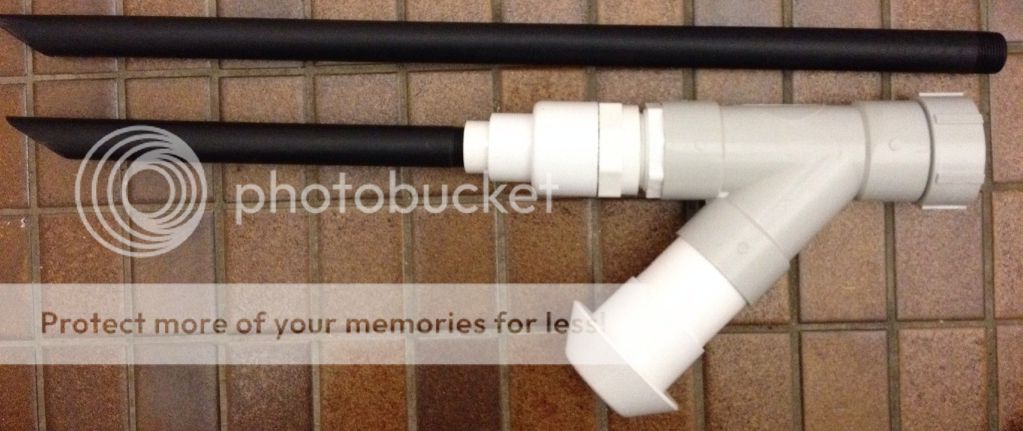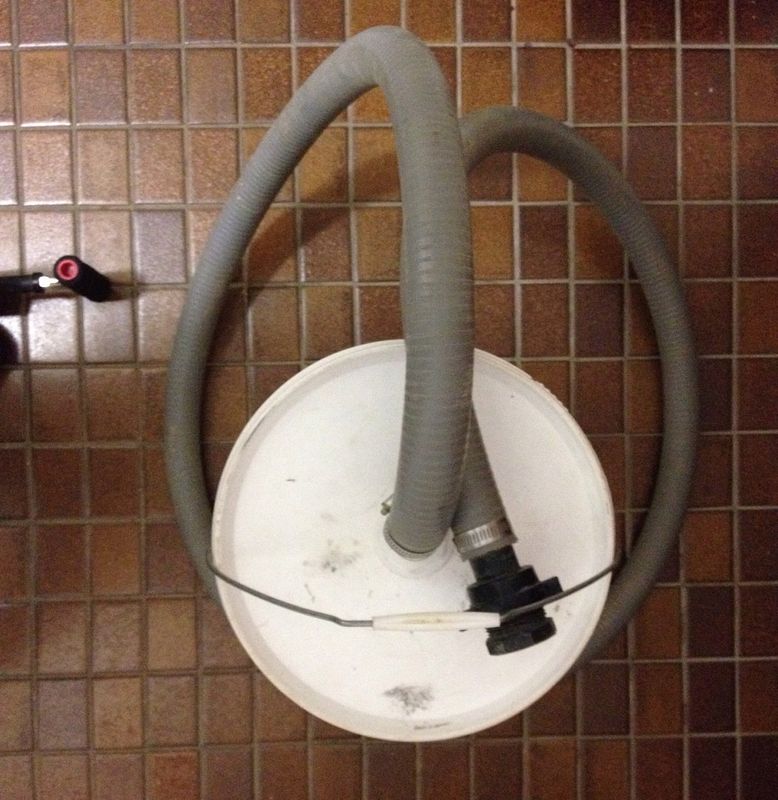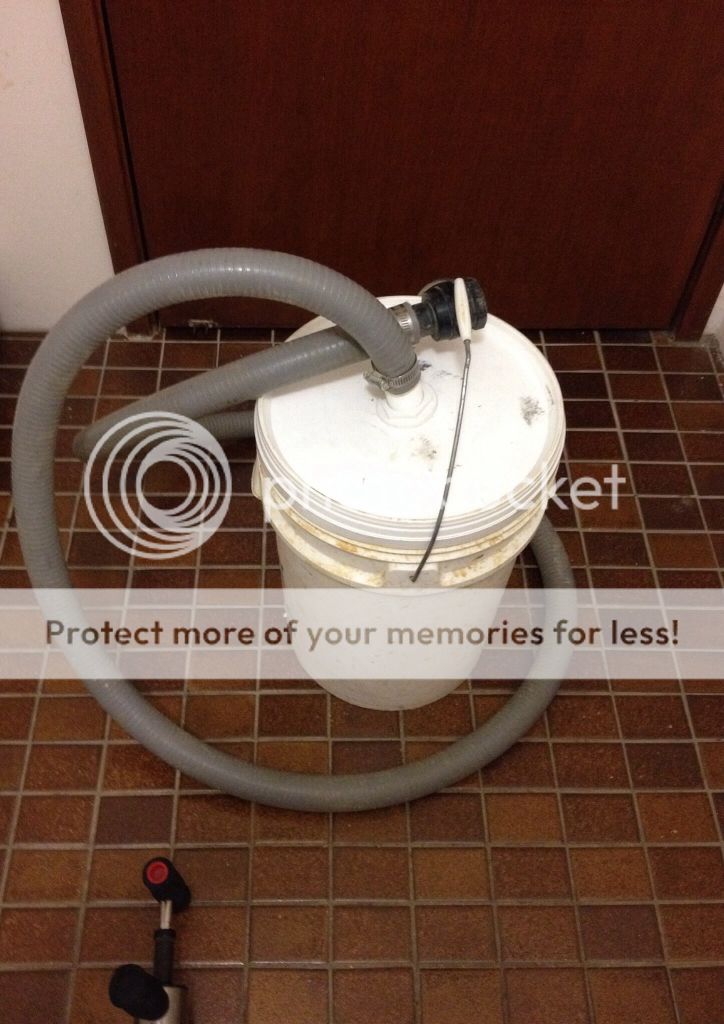Made an attachment for my yabby pump whilst I was in Bunnings yesterday. Got a few odd looks from the plumbing folk in the store as I grabbed various bit and pieces and put them together to see what would work. I was running back and forth between the various bins of plumbing parts trying this and that as I went. In the end I had something that resembled a large pistol so I got more odd looks from the plumbing folk. In the end curiosity got the better of one of the staff and he asked me what I was making as he said it looked like some sort of breather. I said it was for my yabby pump and he said oh I don't know anything about fishing and left.  It was also a nightmare for the checkout lady as she tried to scan all the bar codes off the completed device.
It was also a nightmare for the checkout lady as she tried to scan all the bar codes off the completed device.  . I finished it off when I got home by cutting the long pipe in two to make two nozzles for it with a 45 degree angle on the end of each.
. I finished it off when I got home by cutting the long pipe in two to make two nozzles for it with a 45 degree angle on the end of each.
I wanted to achieve two things with this attachment:
1) I wanted to have a better way of sampling as I had seen the gold getting dropped out the end of the unmodified yabby pump before I could get it to the pan so I needed to add a trap to catch the heavy material; and
2) I wanted a better way to fill buckets whilst crevicing that didn't involve bending down too much as I have a lower back problem.
I think I have achieved those goals but only time will tell as I am yet to test this in a creek bed.
Here is the short nozzle version for loaming with the small sampling pot attached. The sampling pot can be extended if needed but I just wanted to collect enough to fill a loaming pan. The pot has a strainer on the end so I am not collecting the water just the heavies. Once full the sampling pot can be removed and tipped into the pan.


Once a likely spot is identified the sampling pot can be swapped out and a longer nozzle attached. This Long nozzle version is for crevicing and has a hose and bucket attached instead of the sampling pot.
The hose is attached to the lid to allow for swapping out buckets once they are full. The hose tends to tip the bucket over so I will have to put a large rock or water in the bottom when I set it up. I use the buckets handle to keep the lid in place.
I wanted to reuse the hose off my Highbankers pump as I figure I won't be running both at the same time so I had to add a few reducers from the 50mm pipe to get down to the 32mm required for the hose attachment. I may end up getting another hose if I find I do want to run both together.





Once I test this out in the field I will let you know how it goes.
I wanted to achieve two things with this attachment:
1) I wanted to have a better way of sampling as I had seen the gold getting dropped out the end of the unmodified yabby pump before I could get it to the pan so I needed to add a trap to catch the heavy material; and
2) I wanted a better way to fill buckets whilst crevicing that didn't involve bending down too much as I have a lower back problem.
I think I have achieved those goals but only time will tell as I am yet to test this in a creek bed.
Here is the short nozzle version for loaming with the small sampling pot attached. The sampling pot can be extended if needed but I just wanted to collect enough to fill a loaming pan. The pot has a strainer on the end so I am not collecting the water just the heavies. Once full the sampling pot can be removed and tipped into the pan.


Once a likely spot is identified the sampling pot can be swapped out and a longer nozzle attached. This Long nozzle version is for crevicing and has a hose and bucket attached instead of the sampling pot.
The hose is attached to the lid to allow for swapping out buckets once they are full. The hose tends to tip the bucket over so I will have to put a large rock or water in the bottom when I set it up. I use the buckets handle to keep the lid in place.
I wanted to reuse the hose off my Highbankers pump as I figure I won't be running both at the same time so I had to add a few reducers from the 50mm pipe to get down to the 32mm required for the hose attachment. I may end up getting another hose if I find I do want to run both together.





Once I test this out in the field I will let you know how it goes.





